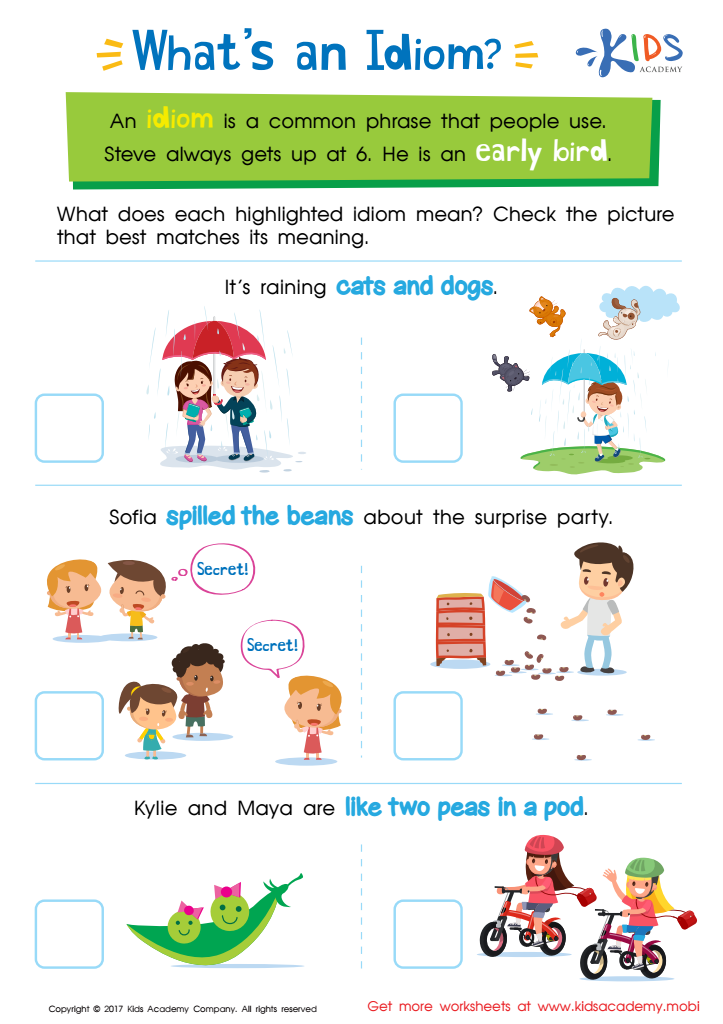Literal and Nonliteral Meanings - Lesson for Grade 3, Chapter - Word Relationships and Nuances
In this engaging lesson on "Literal and Nonliteral Meanings," Grade 3 students will dive deep into the world of word relationships and nuances within the Vocabulary unit. This lesson is designed to equip young learners with the ability to distinguish between literal meanings, which are the exact, straightforward meanings of words and phrases, and nonliteral meanings, which include idioms, metaphors, and similes that convey more abstract or figurative ideas.
Through interactive activities, including an Idiom Worksheet, students will explore how words can be used in different contexts to express a variety of concepts and emotions. This exploration helps in enhancing their comprehension and interpretation skills, vital for reading fluency and understanding complex literary texts. Understanding nonliteral language enriches students’ linguistic repertoire, enabling them to appreciate the beauty and depth of language, as well as improving their own creative writing skills.
Learning to differentiate between literal and nonliteral meanings is crucial, as it lays the foundation for effective communication, critical thinking, and creativity. As they master this skill, students will not only excel academically but also develop a lifelong appreciation for the power and flexibility of language.

-
Activity 1 / Idiom Worksheet
Make learning popular expressions a piece of cake with this idiom worksheet for 3rd grade!
Idioms are common phrases that we all know and love, but aren’t exactly literal. Open your child’s eyes to figurative language in a fun and easy way using the common expressions they already know and love!






